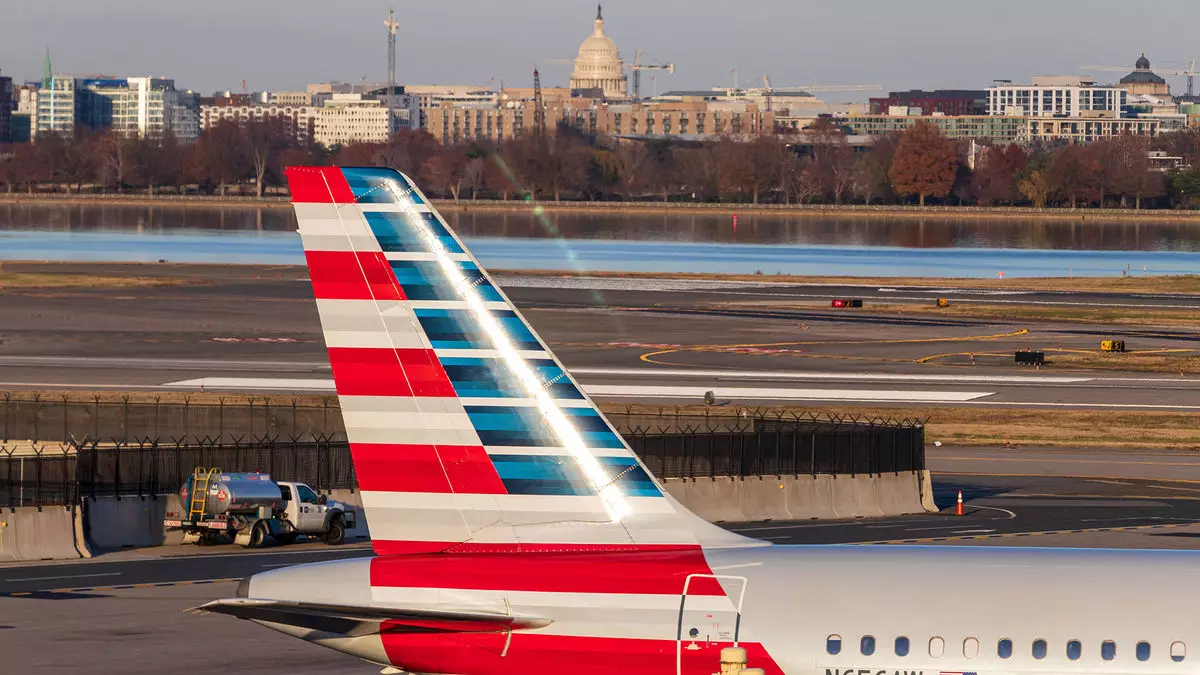American Airlines is on a mission to reclaim its foothold in the corporate travel segment following a noticeable shift that diminished its market share. On a recent earnings call detailing the financial performance for the fourth quarter, CEO Robert Isom mapped out the airline’s ambitious goal to restore corporate travel revenue to its pre-disruption levels by the conclusion of 2025. This initiative comes on the heels of a challenging period where American Airlines aggressively pursued direct sales and new distribution channels, inadvertently alienating its traditional customers—corporate travel agencies and business clients alike.
The decision to backtrack from this unpopular strategy appears prudent, especially considering Isom’s assertion that the airline remains “on track to fully restore [its] revenue share from indirect channels as we exit this year.” Specifically, he noted an 8% year-over-year increase in Q4 business travel revenue, complemented by enhanced yield strength going into the new year. This growth signals a positive upward trend that gives some optimism for the company’s future trajectory.
American Airlines’ previous shift towards direct sales may have been well-intentioned, aimed at improving margins and streamlining processes. However, it evidently strained the airline’s relationships with travel agencies—critical touchpoints for corporate clients. Recognizing this misstep, American’s leadership, including Vice Chair and Chief Strategy Officer Steve Johnson, emphasized that the re-establishment of rapport with travel agencies has been a pivotal focus over the past quarters.
In their strategy to transition back to a model favorable for corporate partners, American Airlines has actively negotiated new agreements with 30 significant travel agencies. As Johnson pointed out, these agreements aim to incentivize agencies to channel more business toward American Airlines once again. The strategy indicates a nuanced understanding of corporate travel dynamics, highlighting the importance of partnerships over unilateral approaches that may have undermined trust in the past.
One key takeaway from the earnings call is Johnson’s caution regarding the recovery process. He characterized the re-gaining of market share as “not a linear process,” prompting stakeholders to temper their expectations. This statement underscores the complexities inherent in corporate travel, where relationships, negotiation outcomes, and market conditions all play critical roles. Moreover, it signals that while recent agreements are promising, the outcomes may not be immediately visible.
Isom’s active engagement with both corporate clients and industry partners played a significant role during this recovery window. Drilling down into the nuances of corporate travel has enabled American Airlines to tailor its offerings more effectively. By prioritizing conversations with agencies and customers, Isom aims to ensure their needs are met, enabling swift recovery of market share lost during the strategy pivot.
The airline’s financial metrics also provide some encouraging signs. American Airlines reported a fourth-quarter passenger revenue of $12.4 billion, marking a 3.3% increase year-over-year alongside an impressive net income of $590 million. These positive figures reiterate American’s capacity to rebound from the turbulence initially caused by the shift towards direct bookings.
Moreover, the CEO hinted at “forward bookings” suggesting that the carrier has gained significant momentum in the marketplace, a vital indicator of sustained recovery. As the company transitions into early 2024, analysts and stakeholders alike will be keen to track how quickly American Airlines can capitalize on the existing momentum and translate it into a stronger corporate sector presence.
American Airlines is positioning itself on the precipice of recovery as it aims to reclaim its corporate travel market share by the end of 2025. By reversing its earlier strategies, initiating new partnerships, and focusing on relationship-building, American Airlines is laying the groundwork for sustainable growth amidst a fluctuating travel landscape. As the industry navigates the dual challenges of competition and changing consumer behaviors, how effectively American Airlines executes its new strategies will be pivotal to its success in the coming years. The path may be fraught with challenges, but the optimistic indicators of its recent performance provide a compelling narrative of renewal and strategic realignment.


Leave a Reply